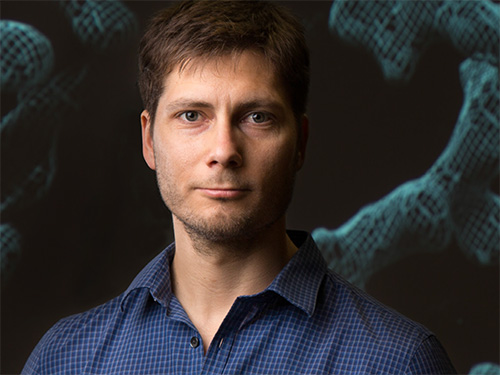Featured Customer: Dmitry Lyumkis, Ph.D.

Please tell us about your background: where you grew up, studied and the field you chose.
I grew up in the Bay Area, to which I moved in 1991 from the former USSR. I went to undergraduate studies at the University of California at San Diego, where I decided to pursue chemistry and biochemistry as a major, as well as a philosophy minor. There, I developed my passion for science, which was especially influenced by my work in a chemistry lab. It was exciting to see molecules being assembled with my own hands, and this spurred my future interests in chemistry and, later, biology.
What led you to choose those fields? What are the challenges that excite you?
I chose my current field of structural biology, because of my original fascination with molecules. In structural biology, we use various methods to look at and analyze protein structure at the atomic level in order to understand the structural basis of biomolecular function. We are particularly interested in understanding macromolecular assemblies involved in gene transposition, integration, and the complex environment of nuclear chromatin. I selected this field because of the complexity of protein structure, having been inspired by my early work with much smaller molecules in chemistry.
Structural biology can be thought of as the chemistry of life. We use cryogenic electron microscopy (cryo-EM) to image proteins in their near-native state, requiring much less protein sample than traditional crystallographic techniques. Cryo-EM is also less constrained by impurities. Nonetheless, purifying high-quality samples of proteins and protein assemblies is one of the biggest challenges in structural biology, and the more structural complexity one wishes to analyze, the more care is required during the sample preparation and purification stage.
How have your Wyatt instrumentation contributed to your research and development studies?
We are constantly using the Wyatt instruments, especially static and dynamic light scattering, to effectively characterize purified protein samples. For example, dynamic light scattering is a quick, simple, and efficient method for assessing homogeneity, polydispersity, etc. in order to verify that the samples are well-purified and suitable for cryo-EM.
There are other things we can do with light scattering, for example add factors and look at binding. Static light scattering is currently hooked up to our FPLC and provides a good estimate of molecular weight, preventing the sometimes-misleading interpretation of molecular weight based on referencing the FPLC UV trace to molecular standards (for example, in the case of elongated molecules).
Any personal anecdotes that would help illuminate your career, interests, connection to Wyatt or outlook for the readers?
I became fascinated with the molecular world that one could uncover using the electron microscope after hearing a faculty talk at The Scripps Research Institute by Jack Johnson. He showed beautiful pictures of viruses in their native configuration, essentially at the atomic level, and was so enthusiastic about his work, that it was hard not to be captivated by the data and its implications. It was hard for me to believe that one can even obtain such atomic-level images. Since then, I knew that I wanted to be doing work that involved using the electron microscope, and I haven’t looked back since.

We are constantly using the Wyatt instruments, as they are very useful in evaluating the quality of our purified sample prior to cryo-EM structural analysis.
